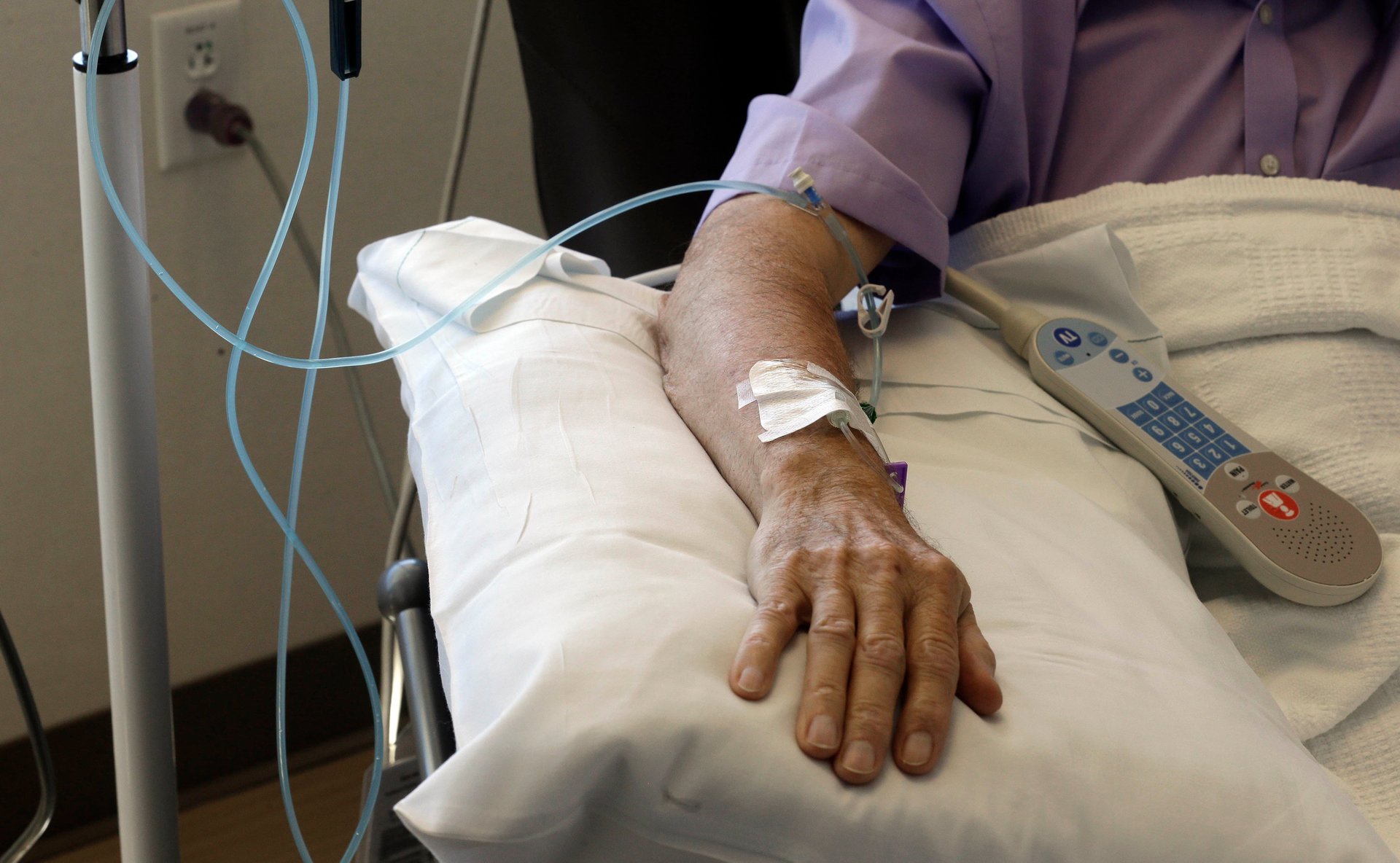America’s ongoing lack of generic drugs is a matter of life and death
Losing a child is one of the hardest things in life; the only saving grace of such a tragedy is the drive it instills in us to save others from such hardship. The passing of Beau Biden, for example, spurred his father, US vice president Joe Biden, to launch a $1 billion “moonshot” initiative to cure cancer.


Losing a child is one of the hardest things in life; the only saving grace of such a tragedy is the drive it instills in us to save others from such hardship. The passing of Beau Biden, for example, spurred his father, US vice president Joe Biden, to launch a $1 billion “moonshot” initiative to cure cancer.
Sadly, any potential innovations will come too late for Owen McMasters. For the past four years, Owen had been fighting acute lymphoblastic leukemia (ALL). He died on Feb. 15.
Unlike many cancers with a dismal prognosis, children with ALL have an 80% to 90% chance of a long-term cure. Owen didn’t need a novel or expensive therapy. He just needed a generic drug, called methotrexate, that has been proven effective against ALL and costs only $1.50 a vial. But while the drug has been around for 50 years, when Owen needed it most, he was told there was a critical nationwide shortage.
He isn’t alone. Nationwide, shortages of critical drugs are not particularly new or rare. According to the US Food and Drug Administration (FDA), such shortages vary greatly year to year. In 2010, the FDA reported that there were 178 drugs shortages. That number jumped to over 250 in 2011 but has since decreased, according to the agency’s tally. The majority of shortages tend to be critical care drugs, cancer medications, and antibiotics.
Efforts like a “Drug Shortage Summit” held by physician and pharmacist groups in November of 2010 may have helped in the short-term, but they failed to attack the root of the problem. And while the FDA says shortages have declined, the picture painted by other organizations are less rosy. According to the University of Utah’s Drug Information Service, for example, in May of 2015 there were around 250 drugs in short supply across the US.
Meanwhile, on any given day you can go to the American Society of Health System Pharmacists website and check out its current list of shortages. The website proclaims proudly that they “work to keep the public informed of the most current drug shortages.” But is awareness enough? As of March, I counted 153 medications on the APH list, ranging from antibiotics to vaccines, cardiac medications, and cancer drugs. Even saline, a simple mix of salt and water used for hydration and resuscitation, made the list. In 2014, similar shortages of saline forced hospitals to develop special protocols designed to conserve IV fluids.
So how is it that one of the richest nations in the world could possibly have a shortage of salt water—or any of these generic drugs? We certainly don’t lack for salt or for water, and we’ve been making many of these drugs for decades.
Some, like Owen’s dad (cancer surgeon Kelly McMasters), believe that generic manufacturers simply do not have a financial incentive to produce drugs like methotrexate. They cite as evidence the fact that we never seem to run out of the drugs that cost thousands of dollars, and that shortages increased after the 2003 Medicare Modernization Act restricted Medicare reimbursement on these drugs to the average selling price, plus a 6% administrative fee. Others argue that increasing regulations imposed by the FDA have created more red tape and propagated shortages, a claim the FDA vigorously denies.
Regardless of where the blame is laid, however, it seems clear that the current way of doing things is broken. A House of Representatives oversight committee found that in 2010, 90% of all oncology generic drugs were made by a handful of manufacturers in this country, meaning production disruptions at one factory can cause serious issues nationwide.
It’s time for a better system. In order to create a sort of emergency pipeline, the generic pharmaceutical industry has started what it calls the “Accelerated Recovery Initiative (ARI),” the goal of which is to limit the number of patients who cannot get a hold of drugs in critical shortage. While the process is long and complicated, it proves this is not an entirely unsolvable issue. Meanwhile, the FDA sent out a press release in February calling for increased modernization in the pharmaceutical industry, and vowing to help provide guidance to companies that are pursuing new technology.
Earlier in March, a bill was introduced by Maine senator Susan Collins to increase competition in the pharmaceutical industry. Among its provisions, the bill would provide expedited review of new generic drug applications “only if there’s one competing generic on the market or if the generic is on FDA’s drug shortage list.” Collins’ actions represent yet another step forward.
Ending the generic shortage will not be easy, but then again, neither is curing cancer. If we can embark on a moonshot to find novel therapies that will cost thousands of dollars a dose, why can’t we find ways to ensure that the generic drugs we’ve been making for pennies a vial can actually make it to the hands of our patients? We need to permanently fix this problem rather than putting on another bandaid—we never seem to have a shortage of those.